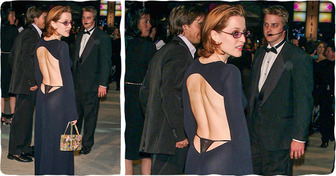We remember the luminous stars of old Hollywood. Yet few are aware of what was truly behind all those beloved hit films. We don’t know the sacrifices actors had to make on set. Studios virtually controlled every facet of the stars’ lives, taking a toll on their mental well-being.
The actors’ life was fully controlled.
- Today’s actors might participate in just one film. But stars of old Hollywood often had to sign contracts that lasted years, typically 4-7 years. For instance, Marilyn Monroe could only dictate her terms to the studio after her old contract had ended. Hayworth had a tense relationship with Columbia Pictures for many years. In 1943, she was suspended without pay for nine weeks because she refused to appear in Once Upon a Time.
- Sometimes, studios would make promising but relatively inexperienced actors attend acting or singing lessons.
- Actors were expected to fulfill virtually every demand from the studios. For example, they had to portray a romantic couple, as was the case with Mickey Rooney and Judy Garland. Conversely, studios sometimes forced actors to break up. Jean Harlow was not permitted to marry her beau, William Powell, as it would “tarnish her image.”
Working toward the ideal image through limitations.
- Marilyn Monroe’s curves were always in the limelight. So, to make her looks more fascinating, she placed marbles in her bras, or she’d take 3 buttons, sew them together and place those inside her dress.
- Actress Katharine Hepburn, who preferred pants over skirts, would wear blue jeans to the studio. Once, they were confiscated from her dressing room while she was on set filming. In this way, costume designers tried to persuade her to wear a skirt, but she instead returned to the set in her underwear and refused to cover herself until her jeans were returned.
- Weight gain was forbidden in many contracts. So, if an actress gained weight, she had to be put on a strict diet. When Greta Garbo moved to Hollywood, she had to eat nothing but spinach for 3 weeks, while Marlene Dietrich would eat tomato juice and crackers for a week when she wanted to lose some weight.
Studio bosses didn’t care about the health of their actors.
- Actors had to literally live on the film set. When filming Gone with the Wind, Vivien Leigh had to work 16 hours a day, 6 days a week, for 125 days.
- It was impossible to take sick leave or vacation during filming. All filming delays would come out of the actor’s paycheck. Once Judy Garland called in ill during a shoot, and she ended up owing the studio $100,000.
Insults were the part of the profession.
- Judy Garland’s food intake was under strict supervision. But the studio bosses who were worried about any extra weight on the diminutive star referred to her as a “fat little pig with pigtails.”
- In 1938, a few actresses who played in the movie flops of that year were named “box office poison.” The list of the actresses included Marlene Dietrich, Greta Garbo, Katharine Hepburn, and Joan Crawford.
- When Carole Lombard had her first meeting with the Columbia Studios mogul Harry Cohn, he said that her hair was too white and that she looked like a call girl. However, the actress was not one who could be easily frightened, and she managed to find a nice reply to this insult.
Maternity wasn’t good for an actress’s image.
- In order not to ruin their acting careers, actresses sometimes had to “adopt” their own children. When Loretta Young got pregnant, the studio workers helped her hide from view, and arranged for her to “adopt” her own child.
- An actress’s unplanned pregnancy could cause delays in film production and create a scandal, so studios didn’t welcome maternity. Besides, an actress had to maintain the image of the most desired woman, and childbirth could damage that.
Children had to work on par with adults.
- During the Golden Age of Hollywood, children had to work on par with their adult colleagues. Young Judy Garland worked 6 days per week, sometimes 18-hour shifts of constant singing and dancing. When she finished working on one movie, she would immediately start working on another.
- No one treated child actors in a special way. “Time is money. Wasted time means wasted money means trouble,” wrote Shirley Temple in her biography.
The actors had to behave in a modest manner during filming.
- From 1934 to 1968, the Hays Code was applied in Hollywood. Among other things, it prohibited passionate kissing on screen. So, an actor and an actress had to kiss according to the strict rules: a kiss could not last longer than 3 seconds.
- These strict rules referred to not just the characters in love but also the characters who were married according to the script. Married couples in the movies had to sleep in separate beds. This was how modesty was promoted.
- The Hays Code also required that women, in love scenes happening on a couch or bed, at all times had to have “at least one foot on the floor.”
Stars of that era often had to conform to beauty standards and studio demands. We’ve envisioned what these celebrities might look like if they had followed today’s beauty standards.












